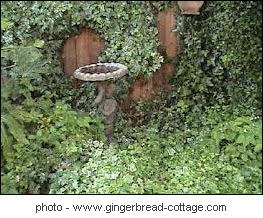If you’re a regular reader of our Landscape Design blog, you know that most of our posts tend to focus on helpful ways for you to beautify your Minnesota yard. But while following the “do”s is very important, it also a great idea to avoid many of the disastrous “don’t”s as well. These comments apply whether you’re a DIY’er or you’re working with a professional MN landscape company. Here is a list of unpleasant ways you can inadvertently sabotage all the hard work you’ve put into your lovely landscape. In addition, we’ll provide some helpful ways to avoid committing these misdeeds.
- Too many details: Including too many details is often a bad idea simply because there are times when less is more. You don’t want to overwhelm the senses.
- Too much planting: Similarly, choosing more plants than you are able to attend to can be a bad move. An overgrown landscape can get ugly. Keep in mind just how much maintenance you’re realistically able to handle or are willing to pay to have done.
- No plan: Starting without a plan makes our list because it is important to have a clear idea of what type of garden works best in your environment. We always work with a plan so that we (and you) can visualize how everything is going to look.
- Too much monotony: Along those same lines, planning for diversity is a great to avoid the problem of too much monotony. It’s a good idea to include a variety of textures, sizes, and colors.
- Too big: With lawns it is always possible to have too much of a good thing. And big lawns are known to suck out valuable resources. Cutting back on the lawn’s size through such elements as flower beds, trees and attractive, low-maintenance perennials is often the way to go. Replacing a section of the lawn with native prairie grasses or even attractive hardscapes means less lawn care, less watering, and more time to enjoy your yard.
 Too much ivy: Ivy often seems like a great idea. But neglecting to keep it properly pruned can ruin a garden very quickly. Not only does it quickly get overgrown, but it can serve as a “pest bridge.” Here’s a previous post that deals with the use of ivy in your garden.
Too much ivy: Ivy often seems like a great idea. But neglecting to keep it properly pruned can ruin a garden very quickly. Not only does it quickly get overgrown, but it can serve as a “pest bridge.” Here’s a previous post that deals with the use of ivy in your garden.- Underestimating size of plants: You’re probably well aware that small plants don’t always give you a good idea of what they will look like when mature. Keep this in mind when making decisions about what to plant. Be sure you’ve got a clear idea of how large those grown plants will be, as well as whether they will spread or not.
- Mismatched plants: On a similar note, it may seem like a good idea to simply plant whatever plants you like, but what should be kept in mind is how well the plants work together. Mismatched plants can spoil things quickly!
Avoiding the mistakes others have made with landscaping is a good first step towards creating your dream yard. Another key step is getting help from a Minneapolis landscape design and installation contractor like us – contact Architectural Landscape Design today to arrange a free consultation!
